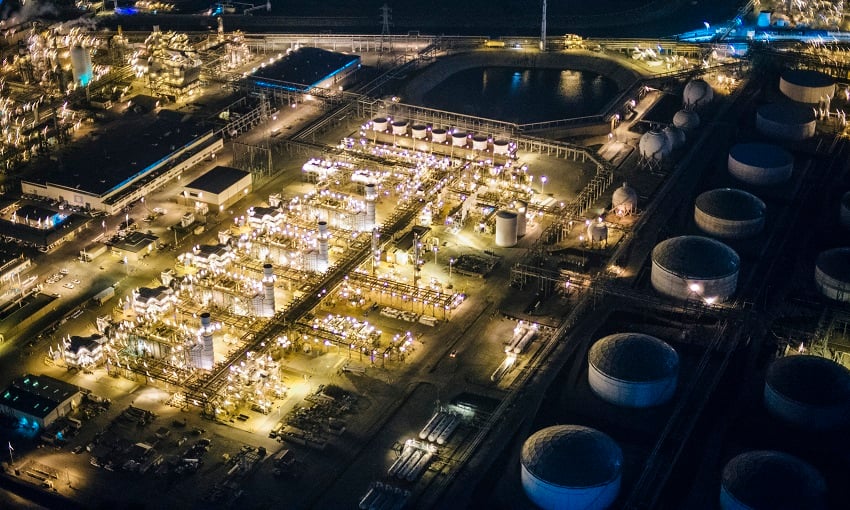How Industry Professionals Can Reduce Diesel Water Contamination
The integrity of diesel fuel is paramount for the seamless operation of machinery in various industries. Water contamination in diesel is a pervasive challenge that can...
Higher crude prices have led to an increase in transportation costs. Lubricant price increases are directly tied to the economy as a whole and can be influenced by many external factors. Based on the cost of raw materials such as crude, base oils, additives and packaging, oil manufacturers set the pricing for all lubricant distributors. In this article, we unpack the pricing mechanics behind lubricants.

Why does lubricant pricing not mirror crude oil pricing?
Factors that determine lubricant pricing
Grease at the hand of lithium prices
A silver lining
Before we unpack why crude oil prices affect lubricant costs, we need to take a step back and understand crude oil pricing. There are three fundamental drivers for crude oil prices: supply versus demand; commodities markets; and the value of the U.S. Dollar. Prices are affected by geopolitical and weather-related events, supply chain mishaps and other factors that can disrupt the flow of crude oil to markets or the demand for that oil. It should also be mentioned that there are many different types of crude as well.
This means that the per-barrel price you see in the news every day is the benchmark price of Brent crude. However, while crude oil can be purchased directly on the “spot market", the daily, reported crude oil prices do not reflect what the refiner or customer actually pays for crude oil.
Unlike prices for fuels that are dictated by crude oil prices, base oil prices are less affected by crude oil price changes. Refiners produce different types of base oils that differ on the viscosity index, and the proportion of sulphur and saturates. Base oils generally cost more to produce than diesel and other fuels.
These prices are tied closely to the demand for targeted final applications, such as finished automotive and industrial lubricants. Refiners set their base oil prices on the estimated demand in the market for these final applications.

Now that we've taken a look at the factors that determine oil prices, we can unpack the cost of lubricants. Because there are many different lubricant types, the prices differ on a product-by-product basis. This is driven by increases in raw materials costs that have travelled up the line to impact the cost of product manufacturing.
Let's break down the lubricant production process by taking a look at the building blocks of these products and their individual market standings:
Like most commodities, the fundamental driver of base oil's price is supply and demand in the market. Base oil is the refined petroleum mineral or synthetic material produced by a refinery to a required set of specifications, typically lubricant base stock. This raw material has the biggest impact on lubricant pricing. Oil markets are experiencing the ongoing impacts of the global COVID-19 pandemic, as well as Russia's invasion of Ukraine. This has further impacted the recent increase in lubricant pricing.
Crude has rallied over the past four months since hitting its highest price since 2008 in early March as the Russian invasion of Ukraine roiled already tight commodity markets. Crude price averaged $98/BBL in February 2022, which was $26/BBL above the December average. The US Energy Information Administration (EIA) revised its 2022 forecast for global crude prices upward by 27% from its February estimate with prices expected to average $105/BBL in 2022. Higher crude prices have led to an increase in transportation costs by 15% across both commercial and commuter spaces.
Refinery operators were also basing decisions on current refining economics and high fuel prices, which led to feedstocks being streamed into fuel production, which inevitably led to reduced base oil output. Base oil remains a watchpoint as we have seen these costs rise in response to feedstock shortages. Prices had gone up to $195/MT over the month of March.
 As many additives are petrochemicals derivatives and contain base oil, the price of crude and base oil affects the price of additives. Additives have led to a price surge with demand outstripping supply. Various additive suppliers have declared force majeure over the last 12 months, with many putting their customers on allocation. Additive increases have been more than 19%, led by raw material shortages outstripping supply.
As many additives are petrochemicals derivatives and contain base oil, the price of crude and base oil affects the price of additives. Additives have led to a price surge with demand outstripping supply. Various additive suppliers have declared force majeure over the last 12 months, with many putting their customers on allocation. Additive increases have been more than 19%, led by raw material shortages outstripping supply.
 Often overlooked, packaging costs have continued to rise, impacted by unexpected increases in plastics and steel prices. This is connected to the plastic products index increasing by more than 20% in the last 12 months, and the steel products index increasing by 70%. Because these products are being used in the containing and transportation of lubricants, it has had an adverse effect on the pricing of this commodity.
Often overlooked, packaging costs have continued to rise, impacted by unexpected increases in plastics and steel prices. This is connected to the plastic products index increasing by more than 20% in the last 12 months, and the steel products index increasing by 70%. Because these products are being used in the containing and transportation of lubricants, it has had an adverse effect on the pricing of this commodity.
Import duties, manufacturing and freight costs together can constitute up to 25% of the price of finished lubricants. Increases in import costs of lubricants and additives have been observed, with knock-on effects on lubricant prices. Freight costs are a notable factor here, and higher oil prices obviously mean a rise in these. The increase in international shipping costs along with delays because of a global container shortage and shipping line congestion has contributed to the higher cost of raw materials. These costs have increased beyond inflation (PPI) which has only escalated by 10% in the last 12 months.
With the global demand for lithium-ion powered devices - from cellphones to electric vehicles - at an all-time high, it has had an impact on the mining of this metal. The world’s shortage of lithium is expected to last for at least another three years, which has increased the price of this commodity. This has had a devastating impact on the production price of grease.
Lithium grease is a multipurpose grease known for its durability, high viscosity, and stability. It is designed to provide long-lasting protection against oxidation, corrosion, extreme temperatures, and wear and tear.
While futures have risen at the beginning of August, widely-watched time spreads have narrowed, suggesting that market tightness is easing. The global oil market is expected to tip into a surplus during the fourth quarter of 2022 according to the International Energy Agency (IEA) at the beginning of August.
More good news on the production of crude oil, OPEC and its partners had promised to raise their production by 600,000 barrels a day in July and August to the global market. This amount is set to increase in September.
The integrity of diesel fuel is paramount for the seamless operation of machinery in various industries. Water contamination in diesel is a pervasive challenge that can...
As the owner and operator of one of South Africa’s largest crude oil refineries, Astron Energy is a leading supplier of petroleum products in the country. Astron Energy...
Copyright © 2025 Astron Energy (Pty) Ltd.
All rights reserved. The Caltex mark is owned by Chevron Africa – Pakistan Services (PTY) Ltd. Under License to Astron Energy (Pty) Ltd.